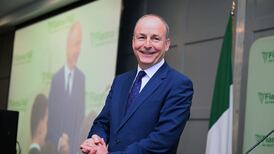In sporting hyperbole, many games are said to be balanced on a knife edge, or to occupy other impossibly precarious locations.
But the Californian Golden Bears American football team can claim an unusual distinction in that line, with no exaggeration. Their home games take place on an active geological fault, liable to be part of a catastrophic earthquake any year now.
The Hayward Fault is not as famous as its near neighbour, the San Andreas. That, however, is offshore, whereas the Hayward runs under one of the most heavily populated areas of California, including the university city of Berkeley, where the Bears and their 72,000-seat stadium are based.
Moreover, although the San Andreas fault caused the one in 1906, the Hayward was responsible for the previous “Great San Francisco Earthquake,” of 1868.
Bat conservation: Simple ways you can help these tiny mammals to thrive in your local area
Pamela Anderson: ‘I felt like life was really like death for me’
Jamie Dornan: ‘I lost my mom, and I lost four of my best friends in an accident. I had a difficult few years’
From national journalism and lecturing in TU Dublin to living as a Buddhist priest
Historically, it has averaged a major quake every 150 years. For that and different reasons, there is an ever-increasing likelihood of another big one soon. The fault has been called a “tectonic time-bomb”.
They knew all this 100 years ago when, in December 1922, building began on a new stadium in the Berkeley Hills. The site was a natural bowl, carved out of the hillside by Strawberry Creek, the city’s main watercourse.
But it also straddled the fault that, over centuries, had bent the creek itself out of line. So builders used the best available earthquake-proofing techniques, including segmented structures and expandable joints.
None of those has faced the ultimate test in the century since. But by 2010, the relentless pressures of fault creep on walls and stairways had turned the stadium into an “appreciable risk to life”.
A $450 million rebuild later, it now has even better quake-proofing than before. And yet in the decade since that, new cracks and intersectional gaps have appeared, as the earth’s Pacific and North American plates continue their age-old duel.
With such drama under the pitch, you might think commentators at Bears games would never need to exaggerate about what happens on the surface.
But on the contrary, the stadium has also once been witness to an event that a radio announcer described as follows:
“Oh my God! The most amazing, sensational, dramatic, heart-rending…exciting thrilling finish in the history of college football! […] excuse me for my voice, but I have never, never seen anything like it ...”
And even that was restrained compared with the comments of the match referee, on whose decision the result swung. “I thought I had started World War III,” he said. “It was like an atomic bomb had gone off.”
That was 40 years ago this autumn, in November 1982, when the Bears beat their local rivals Stanford with a last-minute move that has gone down in history as “the Play”.
Trailing by a point, they received the ball and ran it back, via several lateral passes, some of borderline legality. When a defensive tackle appeared to have ended the game early, with four seconds on the clock, the Stanford band – all 144 members – then spilled onto the pitch at the end the Bears were attacking.
This reduced visibility of the move’s climax, wherein a player called Kevin Moen (a surname than can only have been inherited from Monaghan ancestors) completed the winning touchdown by flattening a Stanford trombone player. After a review, the referee ruled the whole play legal.
The game’s other claim to history is that it marked the farewell to college football of John Elway, who would go on to be one of the great professional quarterbacks, winning two Superbowls, although by his own admission he took years to get over that defeat.
Some of the losing team’s supporters blamed their band, but the musicians saw the funny side of it. Hence a tradition whereby, ever since, when Stanford band managers step down, the official handover to their successors occurs four seconds from the end of the annual game against the Bears.
Hyperbole aside, sport has occasionally triumphed even over tectonic timebombs. So it was during the 1989 Lorna Prieta earthquake, caused by part of the San Andreas Fault system and centred south of San Francisco.
Sixty-eight people died in that, but it could have been a lot worse given the collapse of a double-decker freeway in Oakland.
The earthquake occurred at 5.04 pm, just minutes before the start of the baseball World Series game between two other local rivals, the San Francisco Giants and Oakland Athletics.
Most fans were already safely in the home team’s Candlestick stadium, which suffered a power cut but no serious damage, and traffic on the ill-fated freeway was lighter than usual.
ABC’s match commentator said of the earthquake: “Well, folks, that’s the greatest open[ing] in the history of television”. When the shaking stopped, the PA played Queen’s “We Will Rock You”. But the game, of course, was postponed.














